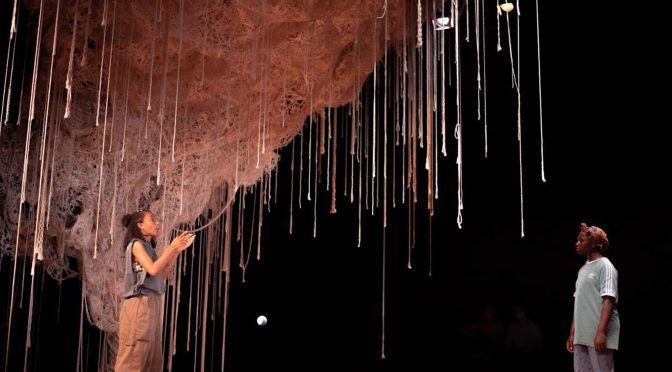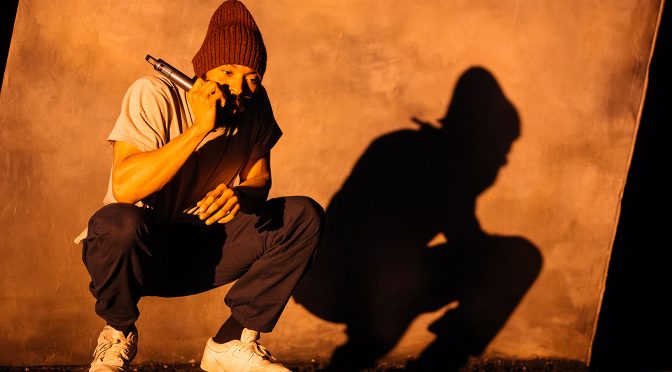The murderous intentions within Jasmine Lee-Jones’ play – back after a sell-out run in 2019 – aren’t really aimed at a particular person. While an heiress invokes the online ire of the character Cleo, the play tackles the subject of racism. Like her creation, it is the playwright’s engagement with social media that makes this award-winning debut original and exciting.
Cleo is joined by her old friend Kara shortly after she sends a first tweet threatening Kylie. They argue, as Cleo descends into a social media storm. Tackling cultural appropriation, capitalism, and queerness – each in relation to race – makes the show an intense 90 minutes. If the women’s relationship feels by turns lost and less interesting than the issues raised, the action is firmly controlled by director Milli Bhatia.
Lee-Jones puts flesh on the bones of Cleo’s academic theories poignantly, and has a go at presenting more than one side of the argument with interjections from Kara. Through strong performances by Tia Bannon and Leanne Henlon, the debates seldom feel forced, indeed they are a great deal of fun. But it is with her language that Lee-Jones thrills: plenty of plays have tried to tackle Twitter, but this script gives the medium a run for its money.
The rhythm in Lee-Jones’ dialogue is impressive enough. And effective: talking of Jenner’s “images of herself and wealth” serves the play’s theme, but it is the neologisms and acronyms that are dazzling – if difficult – making up much of the friends’ conversation and the tweets from others that we hear as well. It can’t just be my own age that makes this tricky to follow. And do the acronyms rise in number as the play goes on? Or at moments of stress? This is a text to be studied, with every word and shorthand phrase demanding attention.
Such innovation ensures incredible respect for Bannon and Henlon’s delivery of lines learned. And personas adopted: both show online reactions with repeated phrases, exaggerated accents and otherworldly movement. The idea of Twitter as an echo chamber comes to life on stage with Rajha Shakiry’s arboreal-inspired design and brilliant work with sound from Elena Peña.
I won’t pretend to have understood every word of Seven Methods of Killing Kylie Jenner. But the combination of articulacy and (sometimes literally) nonsense, of the cerebral and the base – an effective summation of online content – is a brilliantly accomplished achievement.
Until 27 July 2021
Photo by Myah Jeffers


